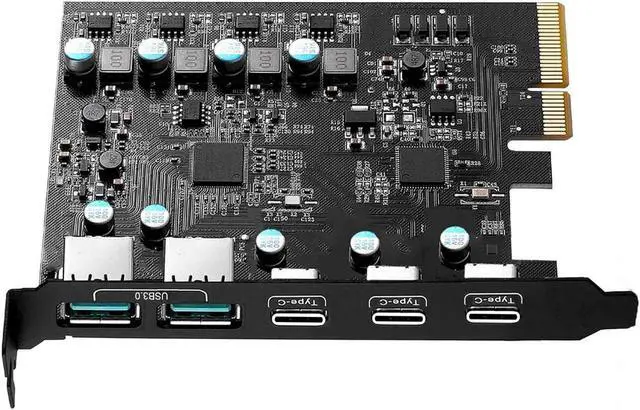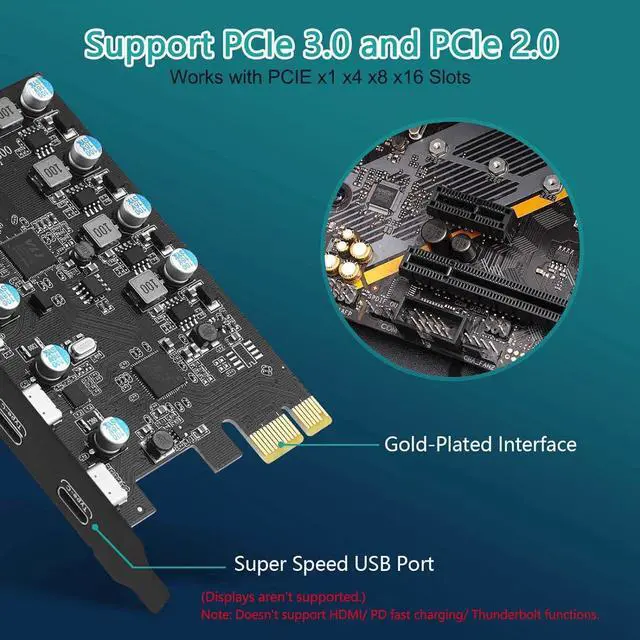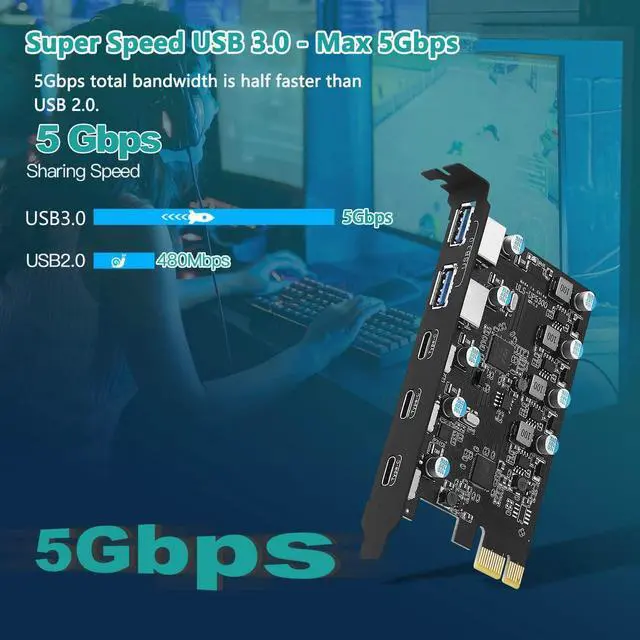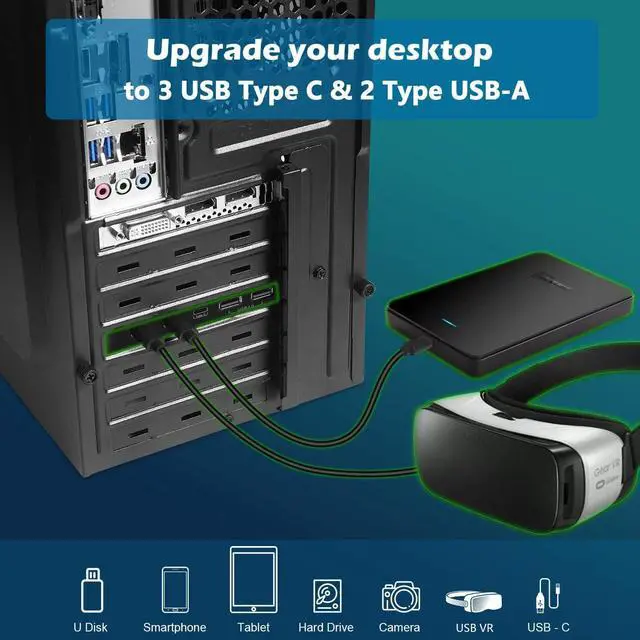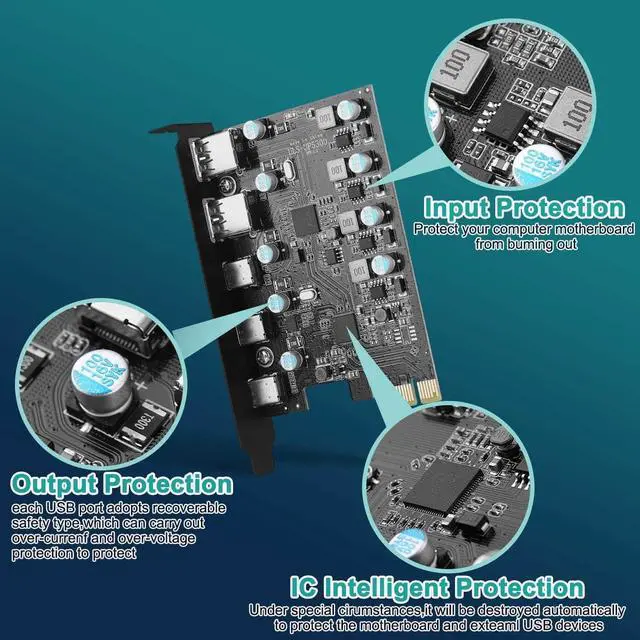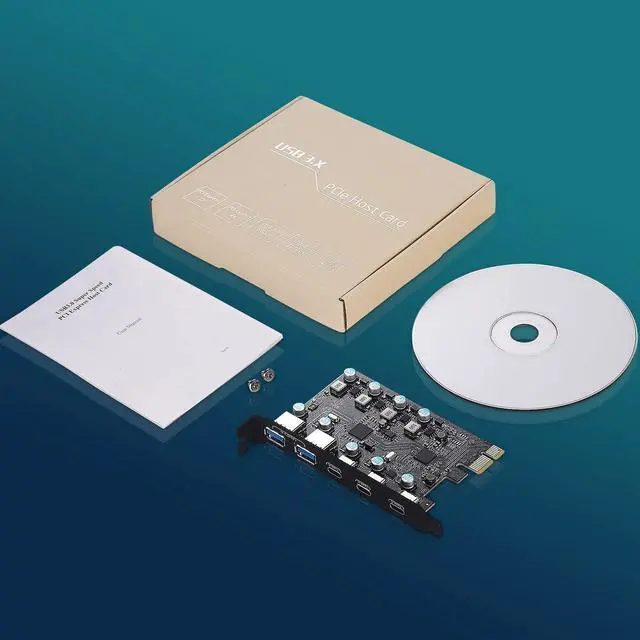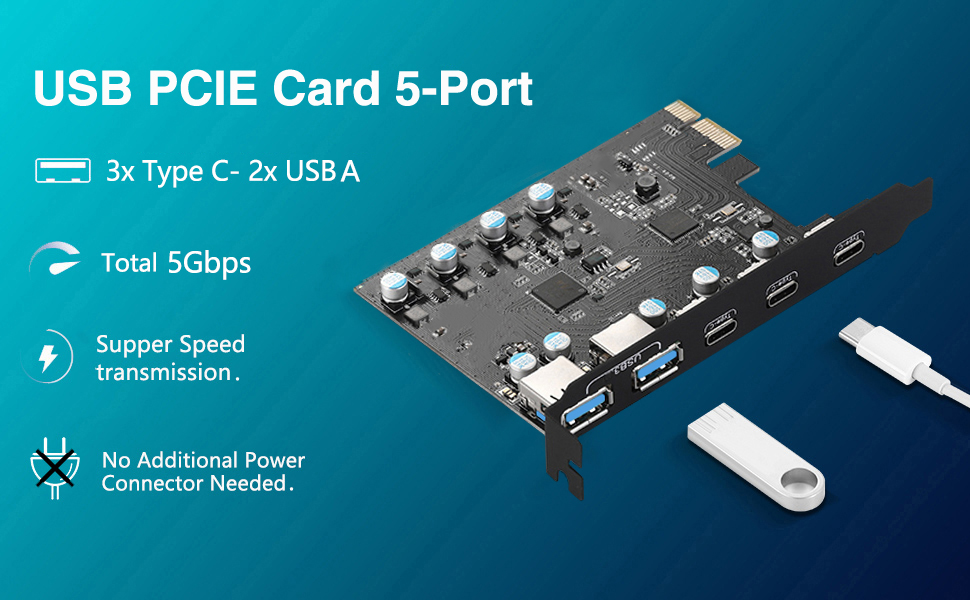
- Easy to Expansion: Insert the USB PCIE Card Inside the computer PCIE x1 slot, no additional power supply, it can be easily upgraded to 3x USB C and 2x USB A ports.Solve the problem of fewer USB ports on the host and allow more devices to be connected to the computer system, such as keyboard, mouse, external hard drives, usb printer, scanner, game controller,USB VR, digital camera, etc
- SuperSpeed USB 3.0: Card can theoretically provide data transfer speeds of up to 5Gbps bandwidth,10 times faster than USB 2.0. Transfer files, HD movies, and songs to your USB device in just seconds.Note: The actual transfer speed may be limited by the connected devices-USB-C port isn't compatible with the Thunderbolt protocol
- Wide Compatibility: Support Windows and Mac OS operating systems, this card is compatible with PCI Express x1 to x16 slots. Compatible with PCI-e 3.0 and 2.0. When installing the PCIE Card, Win 10, Mac OS 10.8.2 above and do not need a driver, and Windows 7/XP systems must install a driver.If there are compatibility issues/not working, let me konw
- Easy to Use: Power can be supplied from the PCI express slot. Installation is very simple, plug and play. Each interface of the USB card has independent insurance, with over-current and short-circuit intelligent protection, which can protect your computer equipment
- Packing List: 1x USB 3.0 PCIE card, 1x CD driver, 1 x installation screws . You get a 1-year-product-Care and friendly customer-service

Each USB port is equipped with an explosion-proof capacitive element on the side, which has an overcurrent voltage regulation function during operation, which is easier to protect your device than other PCIe USB card.

The card is compatible with a variety of mainstream Windows/Mac OS operating systems, no need to install drivers in Win 8/10/Mac OS 10.8.2 or above, plug and play.

Provide 2 USB A for PC supporting PCI-E, which can be inserted into keyboard, USB VR, USB printer, etc. In addition, the PCIE card also has three usb c ports. Which can solve the problem that there are no or few usb-c ports in the slot on the back of the pc host.
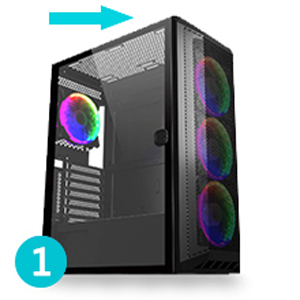
Power off the computer and unplug the power supply. Then remove the cover from the computer mainframe.
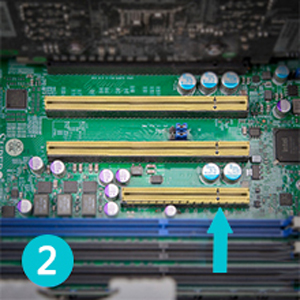
Find a PCI-E x1 or higher specification slot that fits the card.
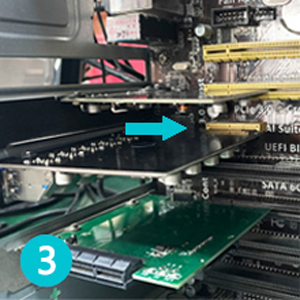
Insert the pcie usb c card down into the PCIE slot.
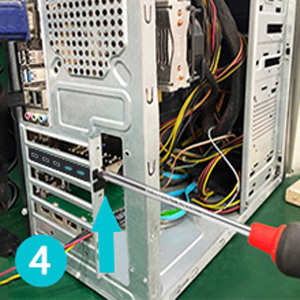
Tighten the screws on the side of the stand, replace the computer host cover, and insert the plug into the socket.
Note:
- The card is suitable for standard size (about 12CM) computers and doesn't apply to low-profile/mini/half-height PC(didn't come with a half-height bracket).
- Do NOT install this USB PCIe card when the computer is on.
- The actual transfer speed of the card may be limited by the connected device.
- Install the driver after the computer recognizes the card, otherwise the installed driver will be invalid.
- It is recommended that you uncheck the option of "Allow the computer to turn off this device to save power" in the "Device Manager" of your PC when using the USB card (perform the same operation for each "USB ROOT HUB").
- For repairs, please contact our online support.


